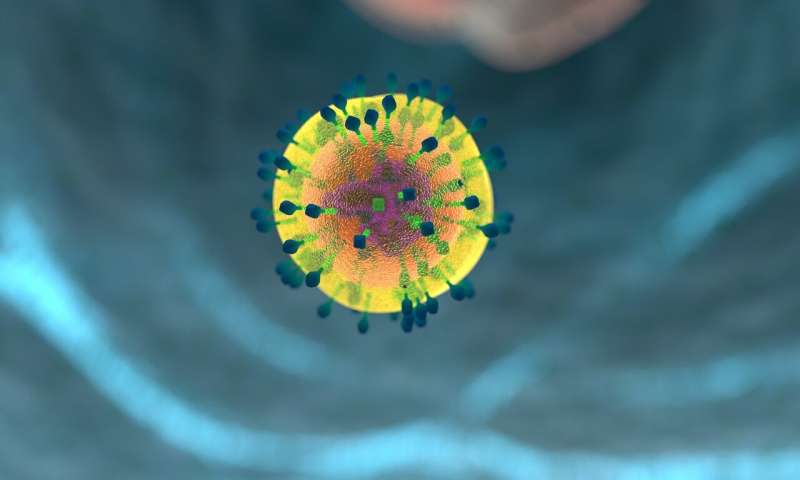
Grouping of pathogen-recognizing proteins on immune T cells may be key to identifying if someone has had an infection in the past, suggests a study published today in eLife.
While tests measuring antibodies against a pathogen are often used to detect signs of a previous infection, it is more difficult for researchers to measure the strength and targets of a person’s T-cell response to infection or vaccination, but the findings hint at a potential new approach. This patient information could one day be useful for detecting infections, guiding treatments or supporting the research and development of new therapies and vaccines.
Immune T cells help the body find and destroy harmful viruses and bacteria. Proteins on the outer surface of T cells—called receptors—allow the T cells to recognize and eliminate human cells that have been infected by specific pathogens.
“While the abundance of specific receptors could provide clues about past infection, the enormous molecular diversity of T-cell receptors makes it incredibly challenging to assess which receptors recognize which pathogens. Not only is each pathogen recognized by a distinct set of receptors, but each individual develops a personalized set of receptors for each pathogen,” explains first author Koshlan Mayer-Blackwell, Senior Data Scientist at Fred Hutchinson Cancer Research Center, Seattle, Washington, US. “We developed a new computational approach that allows us to find similarities among pathogen-specific T-cell receptors across individuals. Ultimately, we hope this will help develop signatures of past infection despite the enormous diversity of T-cell receptors.”
The team tested their approach using data from the immuneRACE study of T-cell receptors in patients with COVID-19. Using their new software for rapidly comparing large sets of receptors, they were able to generate 1,831 T-cell receptor groupings based on similarities in the receptors’ amino acid sequences that suggest they have similar functions.
In an independent group of COVID-19 patients, the team found that the common molecular patterns associated with receptor groupings were more robustly detected than individual receptor sequences that were previously hypothesized to recognize parts of the SARS-CoV-2 virus, demonstrating a major improvement on existing approaches.
“Our study introduces and validates a flexible approach to identify sets of similar T-cell receptors, which we hope will be broadly useful for scientists studying T-cell immunity,” Mayer-Blackwell says. “Grouping receptors together in this way makes it possible to compare responses to infection or vaccination across a diverse population.”
To help other researchers use this approach to develop T-cell biomarkers with their own data, the team has created free customisable software called tcrdist3.
Source: Read Full Article
